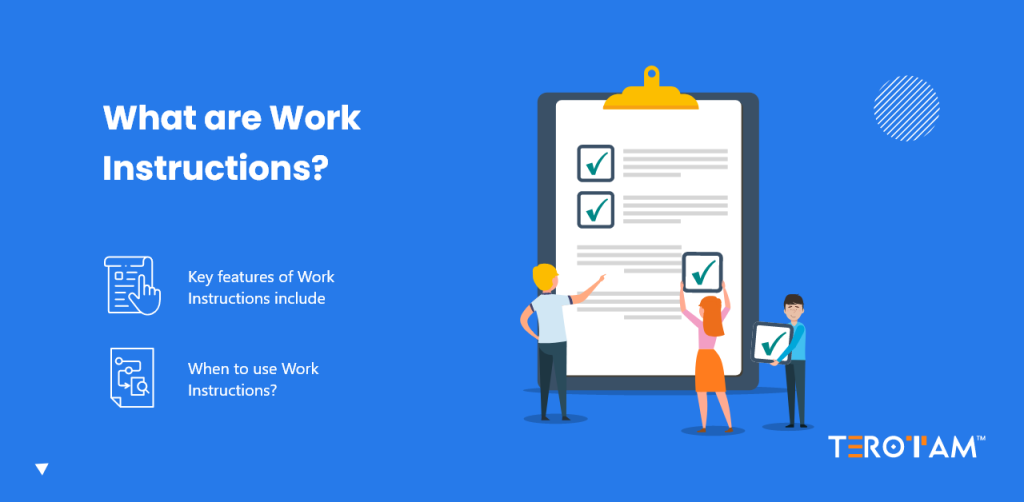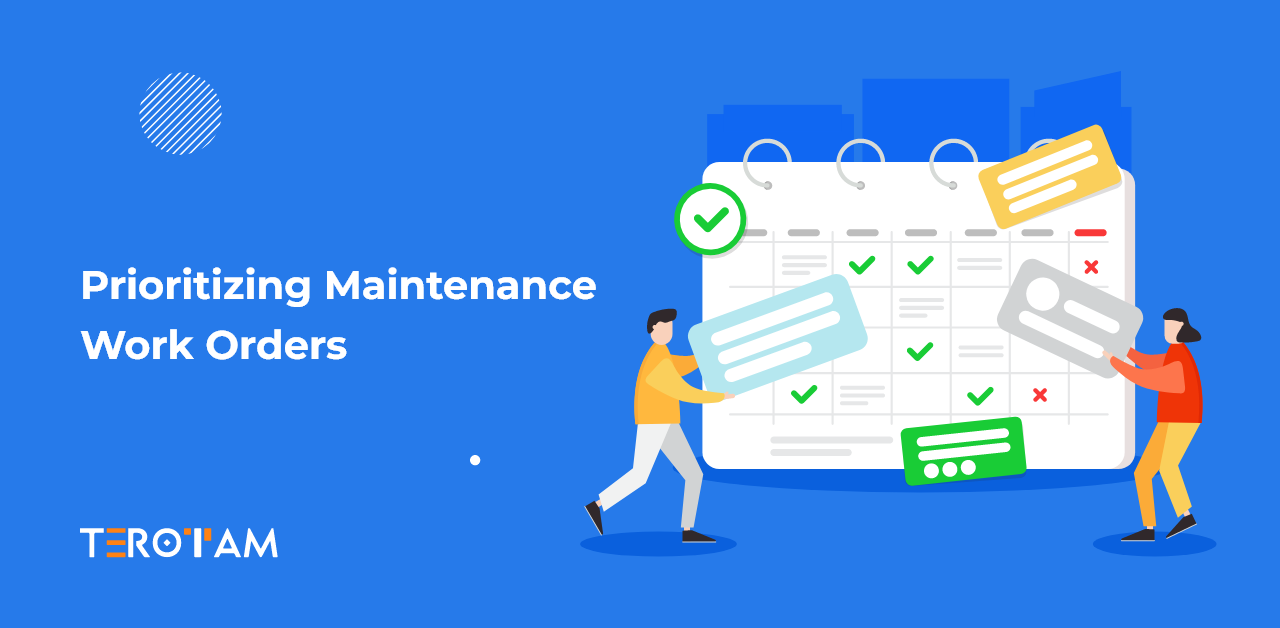Do you often get confused when people talk about Standard Operating Procedures (SOPs) and Work Instructions (WIs)? Don’t worry—these are simply tools designed to help employees perform their tasks accurately and consistently.
Think of it this way: imagine you work at a car manufacturing plant. The Standard Operating Procedure acts as the main guide, outlining key steps such as building the car body, installing the engine, adding the wheels, and painting. The Work Instruction, on the other hand, provides detailed, step-by-step directions for each specific task, such as how to operate the welding machine safely or how to apply paint correctly.
In essence, SOPs define what needs to be done, while Work Instructions explain how to do it correctly. Together, they ensure that processes are carried out efficiently, products meet quality standards, and errors are minimized.
SOPs and Work Instructions are essential not only in manufacturing but also across various operational environments. They help employees follow consistent processes, improve productivity, and maintain product quality.
Standard Operating Procedures and Work Instructions
In manufacturing and operational settings, SOPs and WIs serve as critical documents that guide employees in executing tasks and processes accurately. While the terms are sometimes used interchangeably, there are clear differences between them. SOPs provide high-level instructions for processes, focusing on overall goals and responsibilities. Work Instructions break these steps down into detailed actions, offering precise guidance on performing specific tasks correctly.
By implementing both SOPs and Work Instructions, organizations can streamline operations, enhance workforce training, and maintain compliance with quality and safety standards.
What Are Standard Operating Procedures (SOPs)?
Standard Operating Procedures (SOPs) are high-level documents that provide an overview of a particular process or operation. They outline the steps involved, define the scope, and establish guidelines for consistent execution. SOPs typically answer the “what” and “why” questions regarding a process.

Key Characteristics of SOPs include:
- Broad scope: SOPs cover the entire process from start to finish.
- Regulatory compliance: SOPs help ensure adherence to industry regulations and best practices.
- Quality control: They establish standards for quality and consistency.
- Safety measures: SOPs often include safety protocols and precautions.
SOPs serve as a framework, providing a roadmap for various operations within an organization.
When to use SOPs?
SOPs should be employed in the following situations:
- Establishing a standardized approach: SOPs are essential when you need to define a consistent and uniform way of executing a process across different teams, locations, or shifts.
- Ensuring regulatory compliance: SOPs are critical when your organization needs to comply with industry regulations, standards, or legal requirements.
- Implementing quality control measures: SOPs help establish quality control guidelines and procedures to maintain consistent product or service quality.
- Mitigating risks and ensuring safety: SOPs can incorporate safety protocols, risk assessments, and mitigation strategies to protect employees and operations.
- Facilitating training and onboarding: SOPs serve as valuable reference documents for training new employees and ensuring consistent knowledge transfer.
- Managing change: SOPs provide a framework for implementing and documenting changes in processes or operations, ensuring a smooth transition.
What Are Work Instructions (WIs)?
Work Instructions (WIs) are detailed, step-by-step guides that explain how to perform specific tasks or activities within a process. They provide granular instructions, leaving no room for ambiguity.

Key features of Work Instructions include:
- Task-specific: WIs focus on individual tasks or activities within a larger process.
- Detailed steps: They break down tasks into sequential, easy-to-follow steps.
- Visual aids: WIs may include diagrams, illustrations, or photographs for clarity.
- Training and knowledge transfer: WIs facilitate consistent training and knowledge sharing.
Work Instructions are the “how-to” guides that complement SOPs, ensuring consistent and accurate execution of tasks.
What Are Work Instructions (WIs)?
Work Instructions should be utilized in the following scenarios:
- Detailed task execution: WIs are necessary when specific tasks or activities within a larger process require detailed, step-by-step instructions to ensure consistent and accurate execution.
- Complex or critical tasks: WIs are crucial for tasks that are intricate, high-risk, or have a significant impact on quality, safety, or operational efficiency.
- Training and knowledge transfer: WIs facilitate consistent training and knowledge sharing, ensuring that tasks are performed accurately and uniformly across different teams or individuals.
- Troubleshooting and maintenance: WIs provide detailed guidance for troubleshooting, repair, and maintenance activities, reducing the risk of errors or deviations.
- Compliance with specific requirements: WIs can be used to document compliance with specific regulatory requirements or industry standards related to task execution.
- Infrequent or new tasks: WIs are particularly useful for tasks that are performed infrequently or are new to the organization, minimizing the risk of errors or inconsistencies.
SOPs vs Work Instructions: Which Is Better for Maintenance Management?
Work Instructions (WIs) are likely to be more useful and applicable compared to Standard Operating Procedures (SOPs) when we plan to use them for the maintenance management tasks.
Maintenance operations often involve a wide range of specific tasks and activities that require detailed, step-by-step guidance to ensure accurate and consistent execution. These tasks can range from preventive maintenance routines, equipment inspections, troubleshooting procedures, repair activities, and various other maintenance-related tasks.
Here’s why Work Instructions are particularly valuable in maintenance management:
- Detailed task execution: Maintenance tasks are often complex and intricate, involving multiple steps and specific techniques. WIs provide the necessary granular instructions to guide technicians through each step, minimizing the risk of errors or deviations.
- Equipment-specific instructions: Different types of equipment or machinery may require unique maintenance procedures. WIs can be tailored to provide specific instructions for each piece of equipment, ensuring that technicians follow the appropriate steps for that particular asset.
- Safety and risk mitigation: Many maintenance activities involve potential safety risks, such as working with hazardous materials, heavy machinery, or high-voltage systems. WIs can incorporate detailed safety protocols, precautions, and risk mitigation measures to protect maintenance personnel and facilities.
- Troubleshooting and diagnostics: When equipment malfunctions or issues arise, WIs can provide step-by-step troubleshooting procedures and diagnostic guidelines to aid technicians in identifying and resolving problems efficiently.
- Training and knowledge transfer: WIs serve as valuable training resources for new maintenance technicians or when introducing new equipment or procedures. They ensure consistent knowledge transfer and help maintain uniform maintenance practices across teams.
While SOPs may still have a role in maintenance management, such as outlining overarching maintenance policies, schedules, or quality control measures, the detailed guidance provided by work instructions will greatly benefit the bulk of maintenance-related tasks.
Adopting comprehensive and well-documented Work Instructions, maintenance teams can improve operational efficiency, minimize downtime, extend equipment lifespan, and enhance overall maintenance effectiveness while ensuring consistent quality and adherence to safety standards.
Summing It Up
SOPs and Work Instructions are essential tools that make your job easier and more efficient. SOPs provide the big picture, outlining what needs to be done, while Work Instructions offer detailed, step-by-step guidance on how to perform each task correctly. When used together, they act as a complete guidebook, ensuring consistency, reducing errors, and improving overall productivity.
Want to learn how to implement SOPs and Work Instructions effectively in your organization? Connect with our experts today or write to us at contact@terotam.com








